
views
X
Research source
Long-term use of alprazolam may cause dependence or addiction, and abruptly discontinuing use of alprazolam may result in severe withdrawal symptoms. In some cases, unsupervised withdrawal from alprazolam may result in death. Experts warn that due to the seriousness of withdrawal from benzodiazepines, it is important to take certain precautions in order to withdraw appropriately and safely.[2]
X
Trustworthy Source
PubMed Central
Journal archive from the U.S. National Institutes of Health
Go to source
Tapering Off Alprazolam

Consult with a physician. All cases of benzodiazepine withdrawal should be overseen by a doctor who is familiar with the process. He will monitor your safety and progress, making adjustments to your alprazolam withdrawal schedule as needed. Tell your doctor about all medications and supplements you’re taking. Be sure to mention any medical conditions that you have. These can affect your tapering schedule.
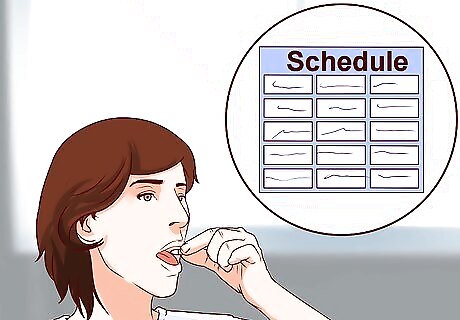
Follow your doctor’s recommended taper schedule. Most of the worst-case withdrawal scenarios result from abruptly quitting alprazolam. Quitting cold turkey from any benzodiazepine is unsafe and is not recommended by benzodiazepine experts. It is possible to reduce your alprazolam withdrawal symptoms by taking smaller amounts of the drug in small increments over a long period of time, letting your body adjust to each taper. Then, you can incrementally taper down again. You will not drop off the drug completely until you are down to a minimal dosage. Tapering schedules with vary with each individual, depending on length of use, dosage, and other factors.

Talk to your doctor about switching to diazepam. If you have been using Alprazolam for a long time (over six months or so), your doctor may switch you to a longer-acting benzodiazepine such as diazepam. Your doctor may also recommend this option if you are on a high dose of Alprazolam. Diazepam works the same way as Alprazolam, but it is longer acting. This means that it stays in your system longer, which may result in fewer withdrawal symptoms. Another benefit of diazepam is that this drug is readily available in liquid form and smaller dose tablets. Both of these options aid in tapering. The switch from alprazolam to diazepam can be immediate or gradual. If your doctor chooses to switch you to diazepam, she will adjust your initial dosage of diazepam to equal your current dosage of Alprazolam. Generally speaking, 10 milligrams of Diazepam equals one milligram of Alprazolam.
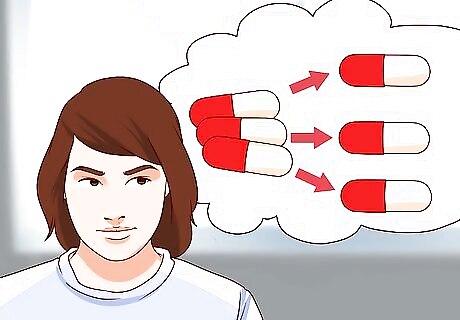
Divide your total daily dose into three mini doses. Your doctor may recommend that you divide your total daily dose into a schedule that you take three times a day. This will, of course, depend on your dose and time of use of the benzodiazepine. For example, if you have used alprazolam for a long time, you may have a longer taper schedule or smaller reductions per week. Your dose schedule may also be adjusted according to how you respond to the taper.
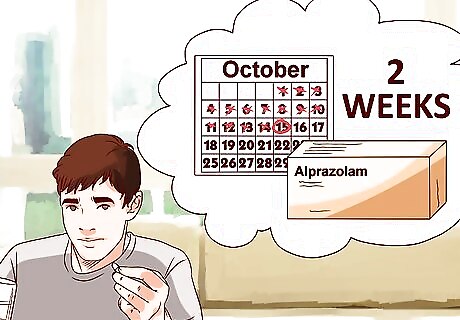
Decrease your dose every two weeks. If you are on diazepam, the doctor generally will recommend decreasing either 20% to 25% of your total dose every two weeks, or 20% to 25% every week first and second week. Then you will likely decrease your dose by 10% every week thereafter. Some doctors recommend tapering 10% every one to two weeks, until you are at a 20% dose. Then you might taper down 5% every two to four weeks. If you are taking diazepam as a replacement for alprazolam, your total dose should not decrease more than about 5 mg of diazepam per week. It should also go down to decreasing by one to two milligrams per week when you reach a small dose like 20 mg of diazepam.
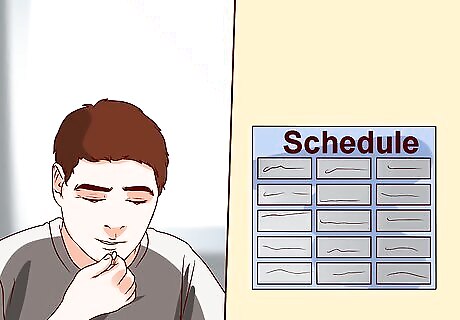
Recognize that your tapering schedule is specific to you. No one model fits everyone, just like no pair of shoes fits everyone. Your taper schedule will depend on different things such as how long you have been on Alprazolam and your dose, and your withdrawal symptoms. If you have been on low, sporadic doses of Alprazolam, your doctor may not recommend tapering or may taper faster than someone who has been on a chronic, steady or high dose. Generally, anyone who has been on a benzodiazepine for over eight weeks will require a taper schedule.
Taking Care of Yourself While Tapering
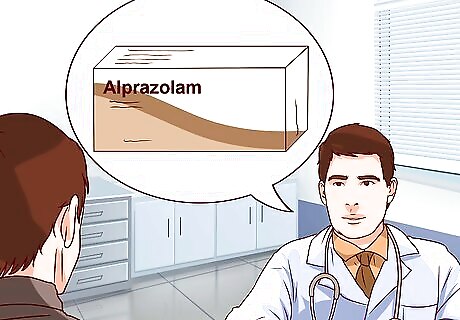
Talk to your pharmacist. One of your best friends while tapering is your pharmacist. Her knowledge is paramount in your tapering success. She will offer solutions such as: compounding your prescriptions, over-the-counter drugs to avoid and other insightful pharmacological issues. If your doctor prescribed other drugs instead of alprazolam, the taper plan will take that into account as well.

Maintain your physical health while you taper. At times, your withdrawal symptoms may make it difficult for you to function normally. But it is important that you take care of yourself while you taper. This will help your body through the detox process. Although there are no studies directly indicating this, physical activity and health may benefit you and minimize withdrawal symptoms. Drink plenty of fluids. Eat plenty of healthy foods, such as fresh fruits and vegetables. Stay away from processed and refined foods. Get as much quality sleep as you can. Get regular exercise.

Avoid caffeine, tobacco and alcohol. While you are tapering, limit your caffeine intake as well as tobacco and alcohol use. Alcohol, for example, creates toxins in your body that can hinder the recovery process.
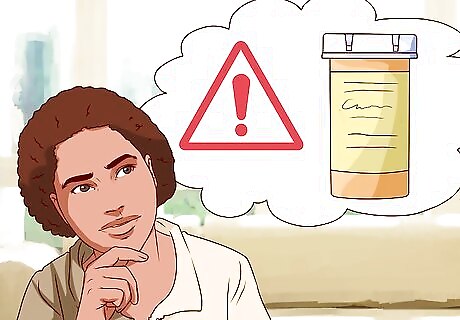
Don’t take over-the-counter drugs without consulting a pharmacist. Avoid using any over-the-counter (OTC) drugs without talking to a pharmacist or doctor first. Many OTC drugs can add stress to your central nervous system as you taper. These include antihistamines and sleep aids.

Keep a journal. Tapering schedules are based on how long you have been taking the alprazolam, and at what dosage. Track your dosage reductions by keeping an eye on when you take your dosage and how much the dosage is. You can keep track of when you have had good or bad days and adjust your taper accordingly. Keep in mind that you will make minor tweaks and adjustments as you move forward. A journal entry example in a spreadsheet form might look like this: 1) January 1, 2015 2) 12:00 PM 3) Current dose: 2 mgs 4) Dose reduction: .02 mgs 5) Total reduction level: 1.88 mgs You may add several daily entries for a multiple daily dosages. Include any withdrawal symptoms or change of mood you notice.

Check in with your doctor periodically. During your tapering process, you should be seeing your doctor every one to four weeks, depending on your taper schedule. Bring up any concerns and difficulties you are still experiencing. Mention any withdrawal symptoms you may be experiencing, such as anxiety, irritability, agitation, insomnia, panic or headaches. If you experience any severe symptoms like hallucinations or seizures, seek medical attention immediately.

Ask your doctor about other medications. If you do experience severe withdrawal symptoms, a doctor may prescribe other drugs to help offset these symptoms. A doctor may also suggest an antiepileptic (anti-seizure) medication, such as carbamazepine (Tegretol). The risk of epileptic seizures increases greatly during withdrawal from alprazolam. If you have a slowly designed taper plan, this is not a typical course of action that needs to be taken.
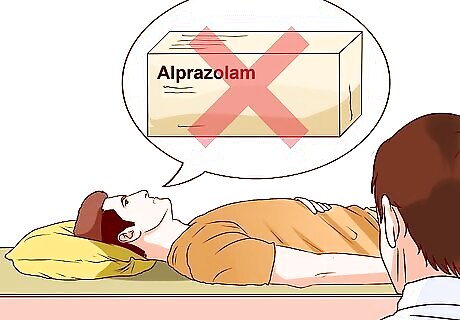
Visit a mental health professional. Paying attention to your mental health is important after withdrawal from benzodiazepines, as it can take weeks, months or even years to fully reverse the neurological changes they cause. The acute process may take up to three months, but full recovery may take a couple years. It’s a good idea to visit a psychologist and/or a psychiatrist during this period. Consider continuing to see a mental health professional after your tapering schedule.
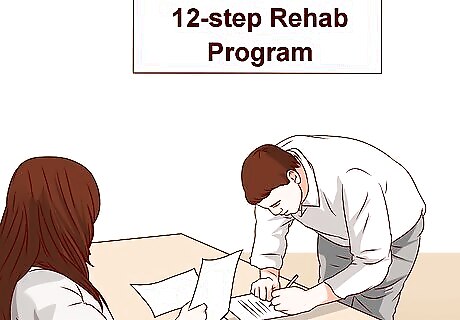
Consider a 12-step rehab program. If you have been taking high dosages of alprazolam, you may want to consider enrolling in a 12-step rehab program. The tapering schedule is separate from a rehab program, but if you are experiencing addition, a rehab program can be very helpful.
Understanding the Withdrawal Process
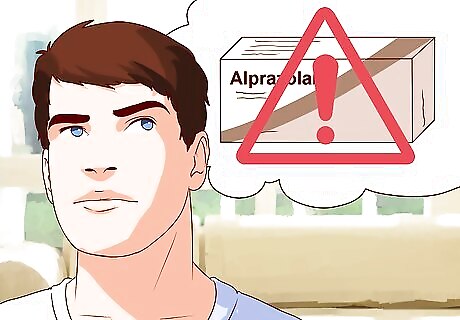
Understand why unsupervised withdrawal from Alprazolam is dangerous. Alprazolam, also known as Xanax (its brand name), is a medication known as a benzodiazepine. This medication is used to treat anxiety disorders, panic attacks and other related psychiatric disorders. Alprazolam and other benzodiazepines increase the action of a neurotransmitter, or chemical messenger in the brain, called GABA. The long-term use of alprazolam may cause dependence or addiction. If you abruptly discontinue using it, you may experience to severe withdrawal symptoms as your brain chemistry tries to rebalance itself. Stopping benzodiazepines like Alprazolam has the potential to cause a life-threatening withdrawal syndrome. In some cases, unsupervised withdrawal from alprazolam may result in death.

Learn the symptoms of withdrawal. Familiarize yourself with the symptoms of benzodiazepine withdrawal before you start tapering alprazolam. This can help ease any mental anguish caused by not knowing what to expect and/or being taken by surprise by your withdrawal. Tapering off (slowly reducing your dose) under a doctor's care will reduce withdrawal symptoms. When you withdraw from alprazolam, you may experience any combination of symptoms and in varying severities. These symptoms may include: Anxiety Irritability Agitation Insomnia Panic Depression Headache Nausea Fatigue Blurred vision Aches and pains
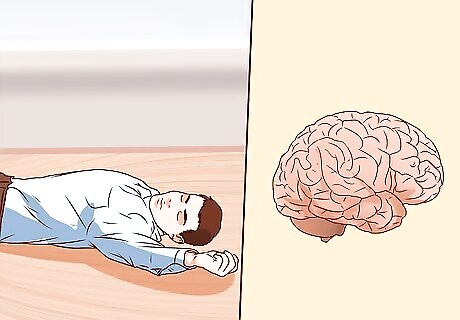
Be mindful of severe withdrawal symptoms. Severe alprazolam withdrawal symptoms include hallucinations, delirium and seizures. If you experience any of these symptoms, seek medical attention immediately.

Recognize how long withdrawal symptoms can last. Alprazolam withdrawal symptoms begin approximately six hours after taking the last dosage. The symptoms typically peak anywhere between 24 and 72 hours. They can last two to four weeks. Remember, until you have completed a successful benzodiazepine taper, your body will be in a constant mild withdrawal state. This is why a slow taper is highly recommended.
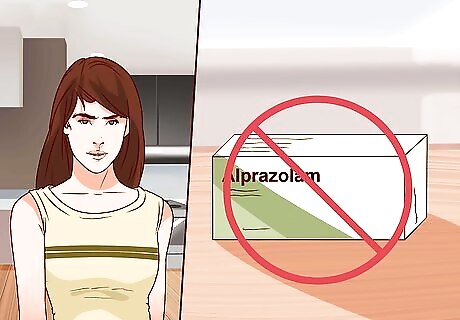
Be patient with your recovery. Generally speaking, tapering off Alprazolam should be as slow as you feel comfortable with. If you taper more slowly, your symptoms should be less severe. Keep in mind that a slower taper results in far fewer withdrawal symptoms. The goal is to complete the tapering without prolonged withdrawal side effects, not to finish as quickly as possible to only suffer side effects and less repaired GABA receptors that will influence the healing process. The longer you are on a sedative-hypnotic like alprazolam, the longer it will take for your brain to return to normal once you stop. The estimated time frame for tapering is between six and 18 months and varies upon dose rates, age, general health, stress factors and time of use. Regardless of your doctor-recommended taper schedule, it should be: Slow and gradual. Scheduled: The doctor will ask you to take a dose at a certain time rather than “as needed.” Adjusted to your symptoms of withdrawal or rebound of anxiety or disease. Monitored weekly to monthly, depending on your situation.




















Comments
0 comment